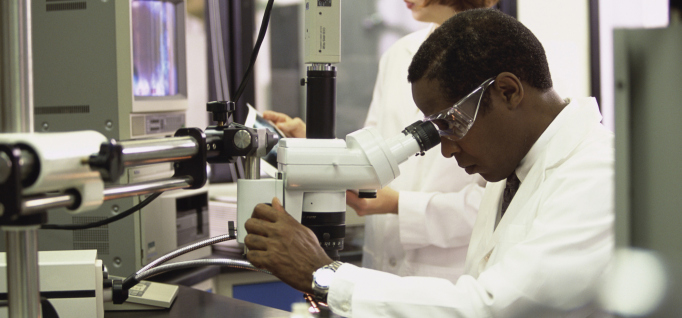Partnership to Increase Biomedicine Graduates
By Reyna Gobel
November 5, 2014
Community college district is working with local private and public institutions to help students get bachelor’s, master’s and PhD degrees in biomedical fields.
The National Institutes of Health (NIH) wants more minority and low-income students to study bioscience and move into biomedical research careers. Wayne County Community College District (WCCCD) and three other Detroit-area colleges and universities are helping NIH meet that goal.
Starting in the summer of 2015, students who start a biomedical degree program at one of WCCCD’s five campuses can finish a bachelor’s and master’s degree at Marygrove College, University of Detroit Mercy or Wayne State University. The program is funded by a $21 million NIH grant — one of 12 awarded through Enhancing the Diversity of the NIH-Funded Workforce program — aimed at helping more minority and low-income students enter biomedical research careers. More than 51 percent of students from the partnership institutions are from underrepresented minority groups, and more than 50 percent are eligible for Pell Grants.
The goal of this partnership, called REBUILD Detroit, is for 75 percent of students to get a bachelor’s degrees in biomedical sciences and 50 percent to get a PhD.
How does the program work? All of the institutions in the partnership not only have transfer agreements, they also teach identical courses. Therefore whether students start at Wayne State, University of Detroit Mercy, Marygrove College, or at one of the WCCCD campuses, students will have identical coursework for the first two years.
Professors coordinate and share information and curricula across the partnership to maintain a consistent learning experience for everyone. This means that community college professors are now conducting research and offering research-based experiences to their students on their campuses or at the participating institutions’ campuses.
What jobs will graduates qualify for? Biomedical career possibilities range from working in research labs on cutting-edge medical breakthroughs to conducting longitudinal studies on the effect of the environment on health and well-being, says George Swan, WCCCD’s vice chancellor for external affairs. “Our students may help develop a new type of heart valve or an artificial hip,” he says.
Swan offers four tips for community college administrators considering this type of partnership:
- Meet only when necessary. Not all objectives are best met with meetings. For instance, the registrar’s office needs to exchange paperwork with the other institutions to establish equivalency tables. This is better handled via email.
- Don’t overlook private colleges. Sometimes private institutions are great partners, either because of location, facilities or faculty. Tuition support or stipends can help offset the cost difference between public and private institutions.
- Be patient about cultural change. With this type of partnership, in which identical courses are being taught at multiple institutions, institutional cultures will need to change. This takes time. For instance, many community college instructors are used to solely teaching, while some university instructors are used to also conducting research. Creating a uniform program involves everyone doing both.
- Make mentorship a priority. “Engage as many people in supporting student success as possible,” Swan says. Everyone from admissions professionals to professors should discuss career and academic goals with students.






